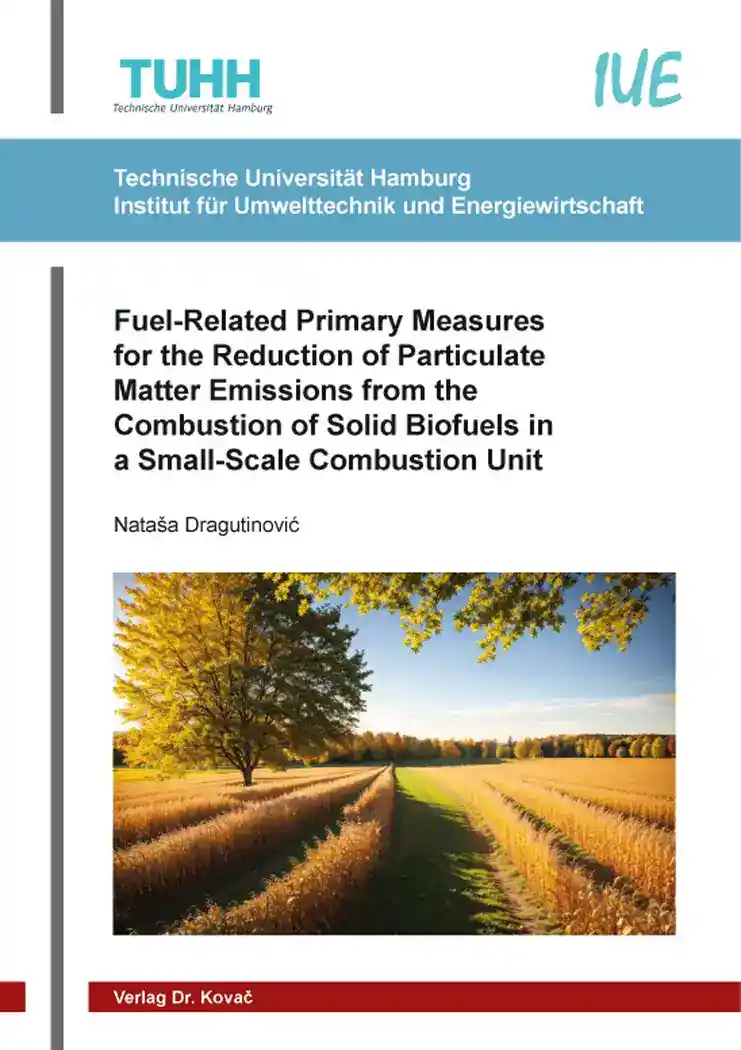Nataša DragutinovićFuel-Related Primary Measures for the Reduction of Particulate Matter Emissions from the Combustion of Solid Biofuels in a Small-Scale Combustion Unit
Schriftenreihe technische Forschungsergebnisse, volume 49
Hamburg 2023, 202 pages
ISBN 978-3-339-13624-4 (print)
ISBN 978-3-339-13625-1 (eBook)
About this book deutschenglish
Articulate matter (PM) emissions often exceed the acceptable limits in urban areas in Serbia. Combustion of crop residues and other fuels unfit for domestic use in small-scale household units are a major source of PM emissions. Fuel related measures to improve the combustion quality in existing low-tech combustion units seem to be a promising approach to reduce ash-related problems.
The main objective of this investigation is to study the possibilities to reduce PM emissions from the combustion of corn cobs in a selected small-scale combustion unit possibly used for the heat provision within the household sector of rural Serbia using fuel-related measures (pelletizing, fuel blending, additivation).
Fuel-related measures have shown to be effective in reducing emissions and ash melting:
- Fuel blending (i.e. corn cob pellets with wood pellets) does influence PM and CO emissions. The higher the wood pellet share in the fuel blend, the lower the respective emissions.
- Additivation of pellets with kaolin influences PM and CO emissions. Highest PM emission reduction of 32 wt. % and CO emission reduction of 82 wt. % were achieved during corn cob pellet additivation with 1.5 wt. % kaolin (and binder), in comparison with non-additivized corn cob pellets with binder.
- Kaolin helps to prevent ash sintering and agglomeration. Kaolin reacts with ash components, binding K in the ash by building K-Al-silicates repressing K release into the gaseous phase (as well as subsequent PM formation) and have high melting temperature.
- Surface morphology investigation of selected PM samples identified two interlocking networks of agglomerations: (1) “primary” larger polyhedral and spherical particles approximately 1 μm in size consisting mainly of KCl, on top of which (2) “secondary” smaller network of square-prism-shaped particles of approximately 200 nm in size (mainly K2SO4 particles and in some cases K-Al-silicates) is found. This morphology of the PM is related to the biomass fuel type. This is further underlined by similar structure and composition of PM samples from corn cob combustion regardless of the presence of additives.
Thus, the modification of the fuel properties can be a promising option to contribute to the reduction of airborne emissions due to the combustion of solid agricultural residues.
